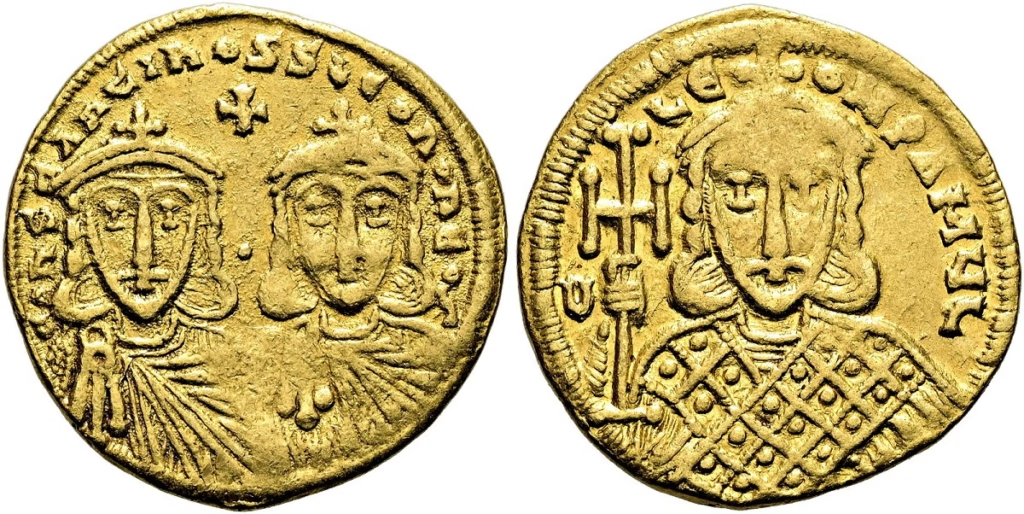Home > Empire of Gold — Why the Byzantine Empire Rejected Silver Coins

For over a millennium, Byzantium stood as the world’s economic superpower. While kingdoms rose and fell around it, the golden solidus remained stable, trusted, and admired across continents. Yet one question still captivates historians and investors alike:
Why did the Byzantine Empire choose gold over silver — and how did that decision shape history?
When Emperor Constantine the Great introduced the gold solidus in 312 AD, he created one of the most durable currencies in human history. Unlike the Roman denarius or other silver-based coins, the solidus retained its weight and purity for more than seven centuries — a symbol of Byzantine discipline and divine authority.
Gold wasn’t merely money; it was imperial propaganda. Each gold coin displayed the emperor’s image, declaring his divine right to rule. The Byzantine solidus became the ultimate symbol of stability and prestige, outshining silver both materially and spiritually.
Silver, once the backbone of the Roman economy, gradually lost prominence in the Byzantine world for three main reasons:

The Byzantine monetary system operated on a three-tier structure:
Silver occupied an awkward middle ground — too valuable for markets, too unstable for imperial use. Its limited role reflected a deliberate strategy to keep the empire’s economy pure, efficient, and gold-centered.
At the heart of the Byzantine world stood Constantinople, the glittering “Queen of Cities.”
Its mint was the most respected in the world, producing coins so precise and pure that the solidus became a global trade standard, accepted from London to Baghdad and along the Silk Road.
In a world filled with counterfeit and fluctuating currencies, the solidus was the medieval equivalent of the U.S. dollar today — a coin of unmatched integrity and universal acceptance.

Today, Byzantine gold coins remain some of the most valuable ancient coins on the market. Investors, collectors and historians recognize their dual appeal — tangible historical heritage and enduring financial worth.
The Byzantine Empire’s rejection of large-scale silver coinage was not an oversight — it was a calculated act of genius. By centering its economy on gold, the empire built one of the most stable and respected monetary systems in history.
Gold endures. Silver fades. Empires rise on trust — and gold is trust made visible.
At House of Emirates®, we bring that legacy to life. Through blockchain-authenticated and tokenized Byzantine coins, we merge ancient craftsmanship with modern digital security, allowing elite investors to own verified treasures from history’s most powerful empire.
Payments accepted by card or bank transfer:
Sign up to receive unique and personalised deals, special offers, information and new product launches.
Copyright© House of Emirates, All rights Reserved